
The crematory pyres outside the revered Pashupatinath Temple in Kathmandu spew grey-white smoke into the bright sun of Friday afternoon. Below, local women wade into the shallows of the revered Bagwati, splashing water on their arms to wash and cool down. At the water’s edge, families gather to bid goodbye to their loved ones. But six days after a 7.8 magnitude earthquake rattled this landlocked nation, officials are struggling to figure out where to store their unclaimed dead.
“We just do not have enough space in the refrigerators” says Bishnu Joshi, an officer with the municipal government in Kathmandu. Wearing a black athletic jacket and matching face mask, Joshi directs the large flatbed trucks lined with the dead, swarmed by flies. After entering the temple compound, the trucks must drive down a crude, mud-worn slope and into the Bhagwati River, through the shallows, and onto the grassy shoal at the river’s center. There, team of volunteers, wearing plain clothes, latex gloves, and medical masks, climb into the flatbed, lifting, dragging or pushing the bodies, wooden with rigor mortis, onto waiting stretchers for deposit atop hastily arranged funeral pyres.
Unlike the formal cremation ceremony, familiar to the thousands of visitors who pass through Pashupatinath each year, there was no pomp or circumstance to this afternoon’s procedure. The unclothed and uncovered bodies are simply tipped off the stretcher, two bodies to each pile, and set alight by the young volunteers as a small but vocal crowd looked on.
These bodies are the unclaimed dead housed at Tribhuvan University Teaching Hospital in Kathmandu. As the death toll has passed 5,500, the university is running out of areas to store the bodies.
Volunteers help move the bodies. “I just wanted to help this week,” said Ramos Tamang, an 18-year-old college student who studies management. As droplets of sweat dripped from his forehead to the edge of his medical mask, the smell of decomposed matter wafted up from his latex gloves. Tamang describes the job as a “horror”, but it is one he’s committed to. His uncle and grandfather were killed last weekend when the family home, in the town of Nuwakot, collapsed. With his friend, Suhesh Kattel, 17, Ramos has joined one of many groups distributing aid and providing assistance in the aftermath of the disaster.
Kattel was similarly moved after visiting his friend’s father, who had his hand amputated due to injuries sustained during the earthquake. “My family wasn’t a victim of this earthquake,” Kattel told TIME, looking beyond the river to the opposite bank where families wait for their loved one’s turn on the cremation pyre. “I feel so sorry for all these families.”
Witness the Aftermath of Nepal's Devastating Earthquake
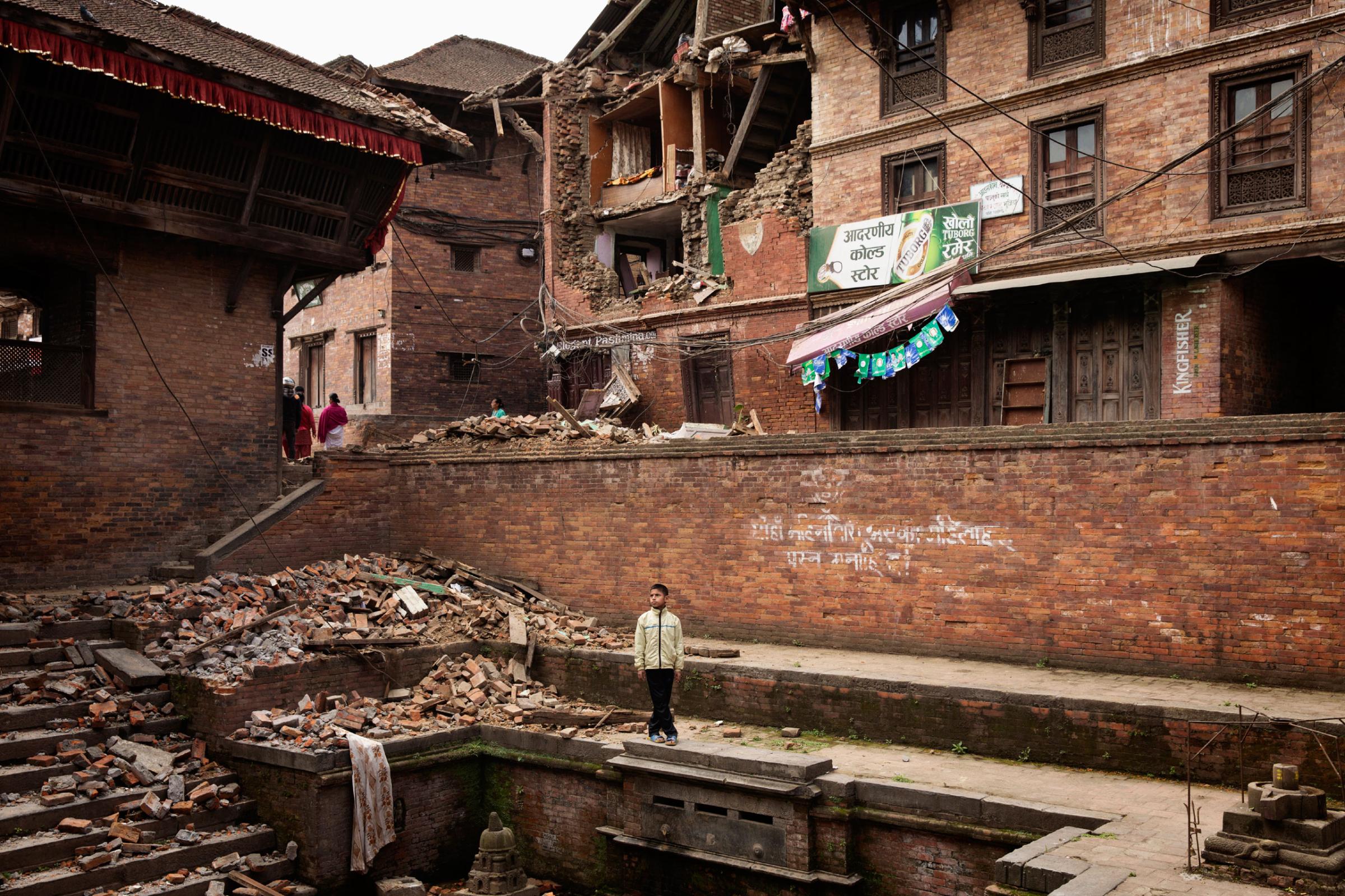

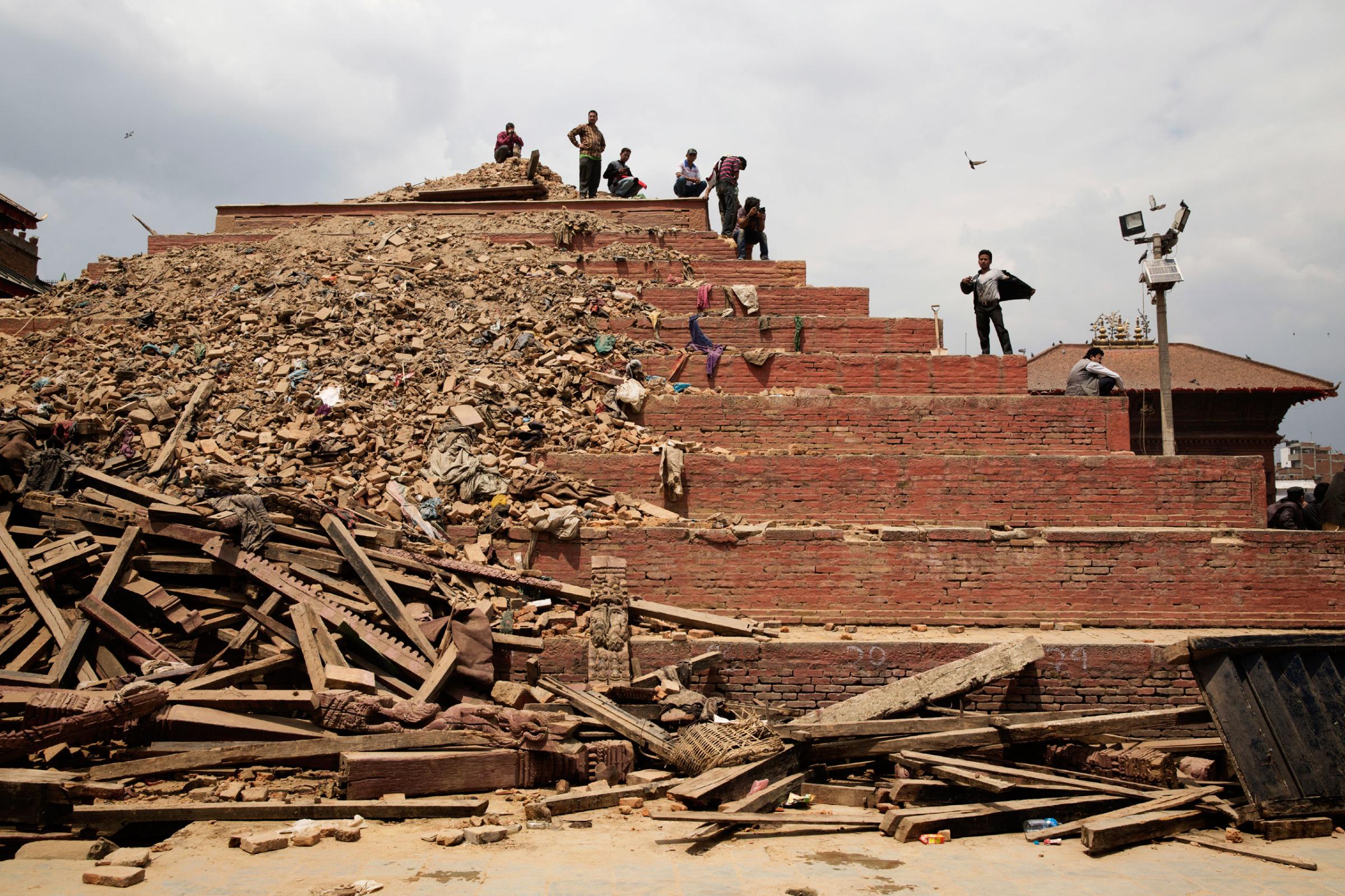

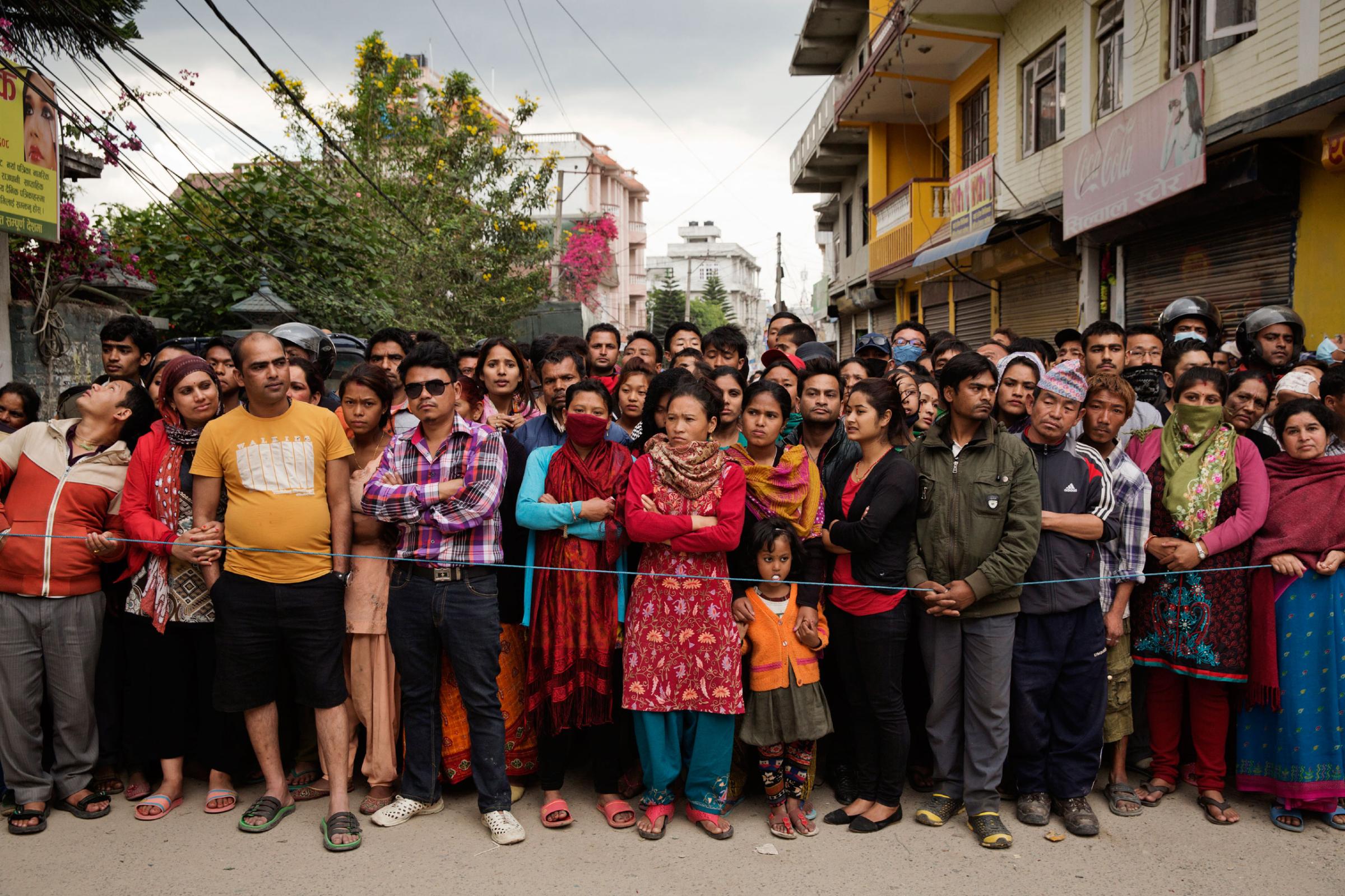


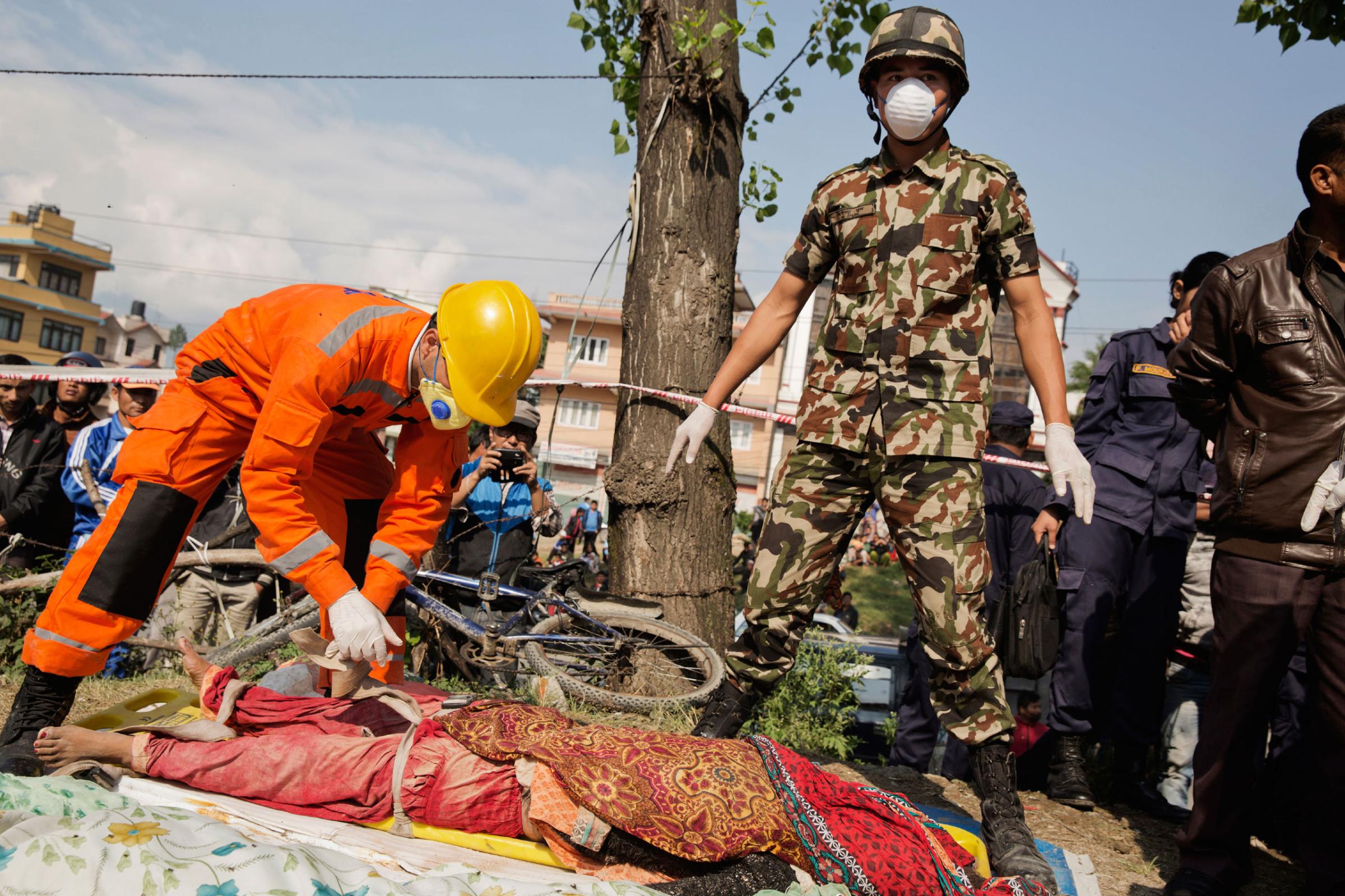
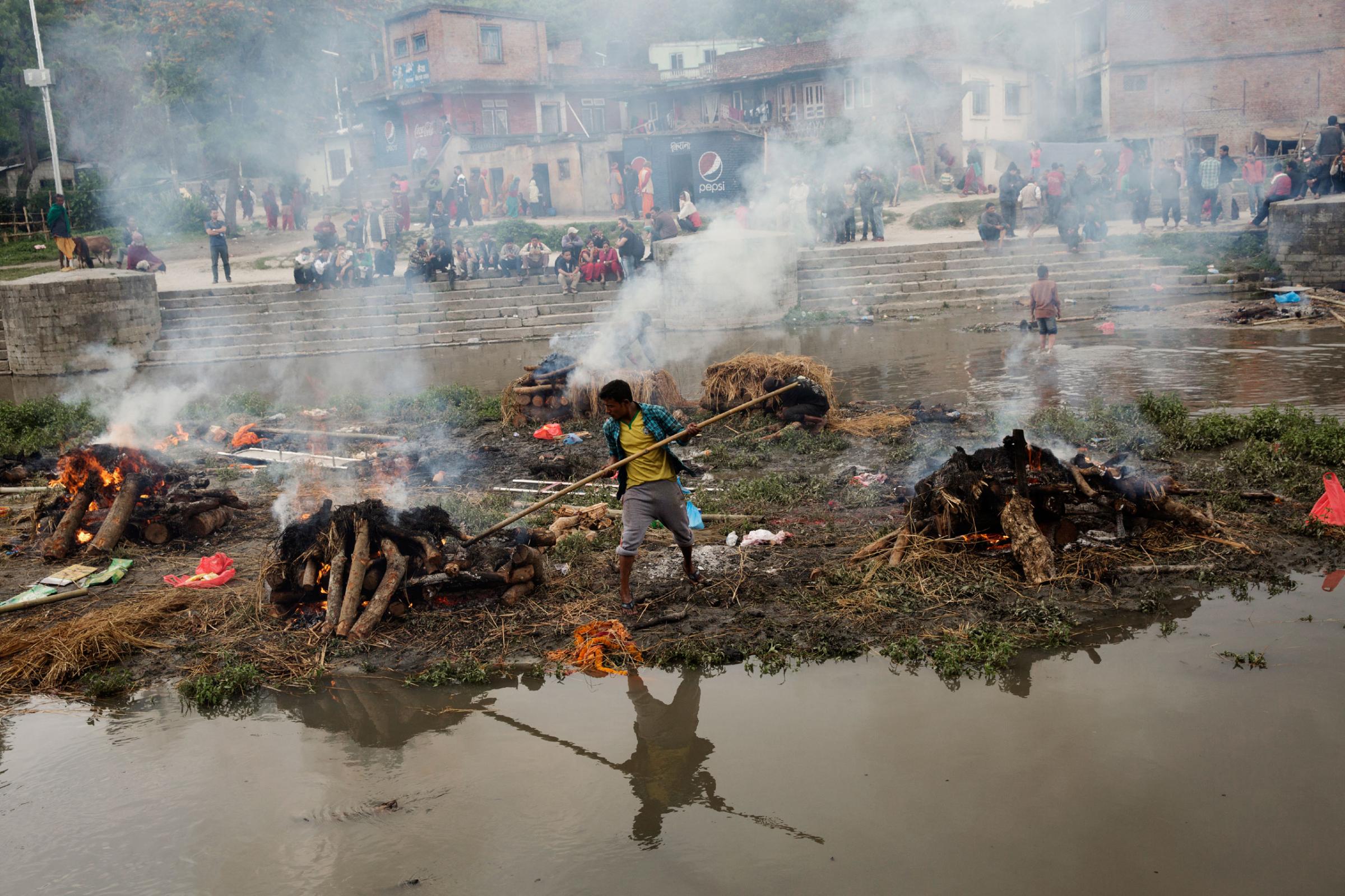

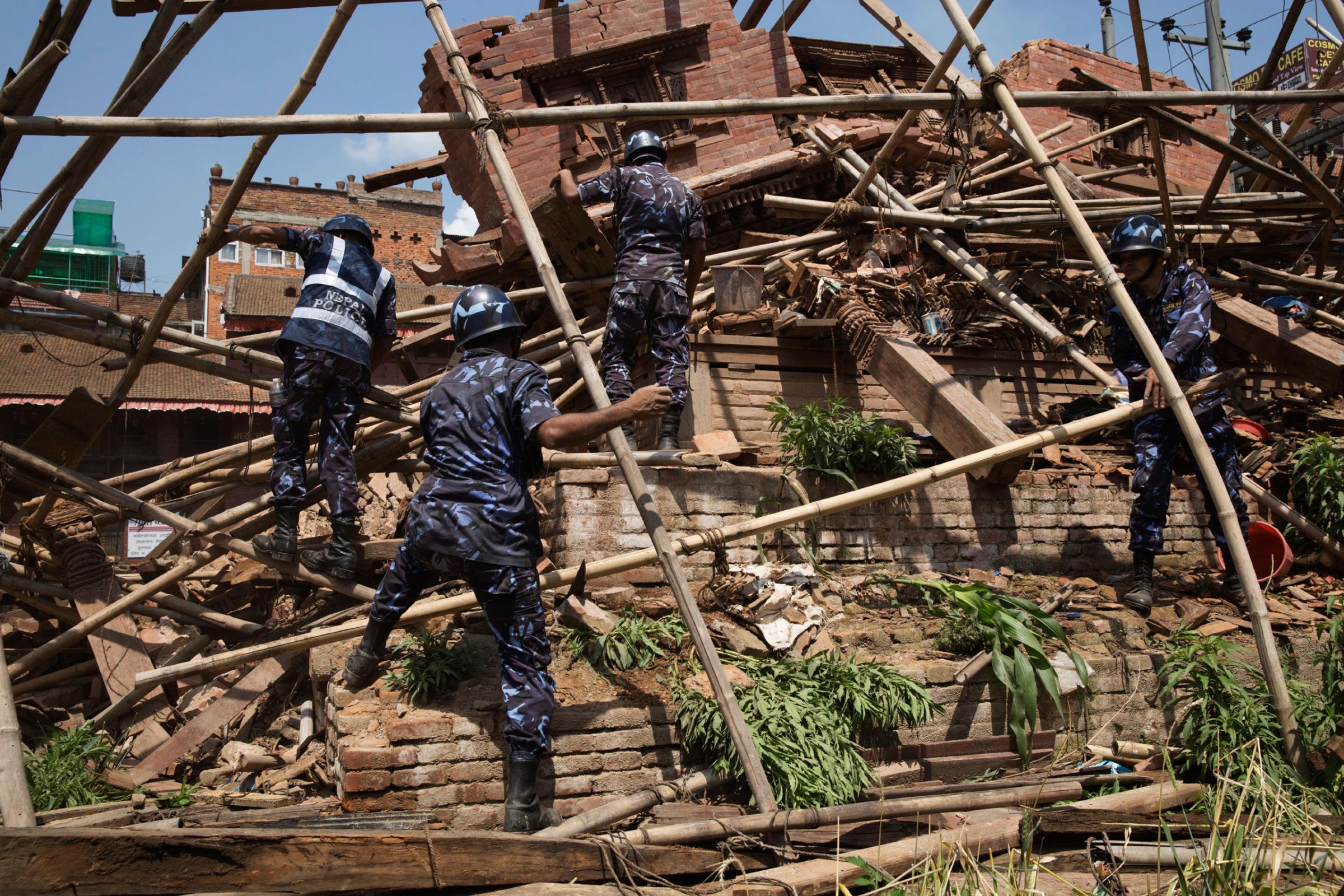


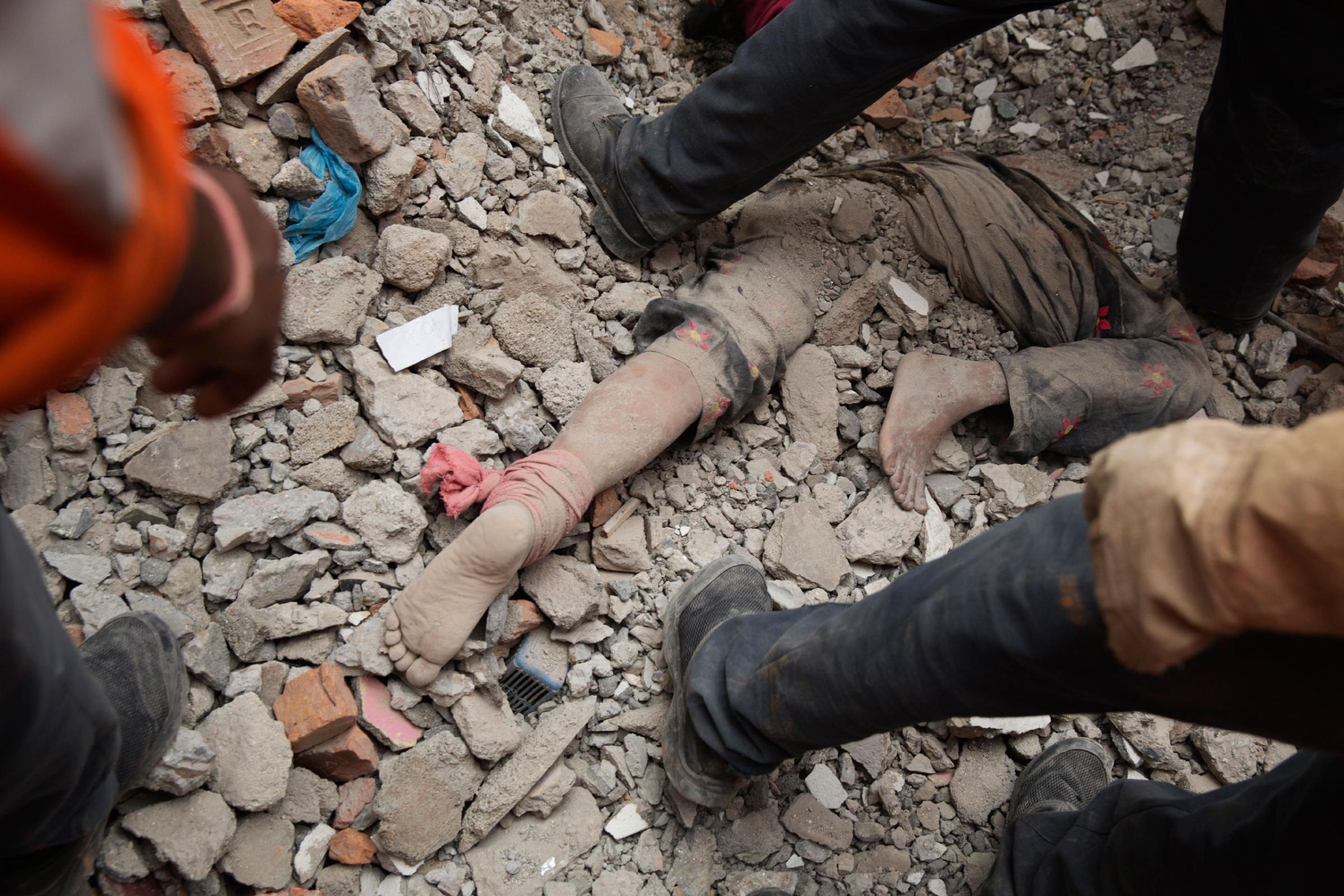
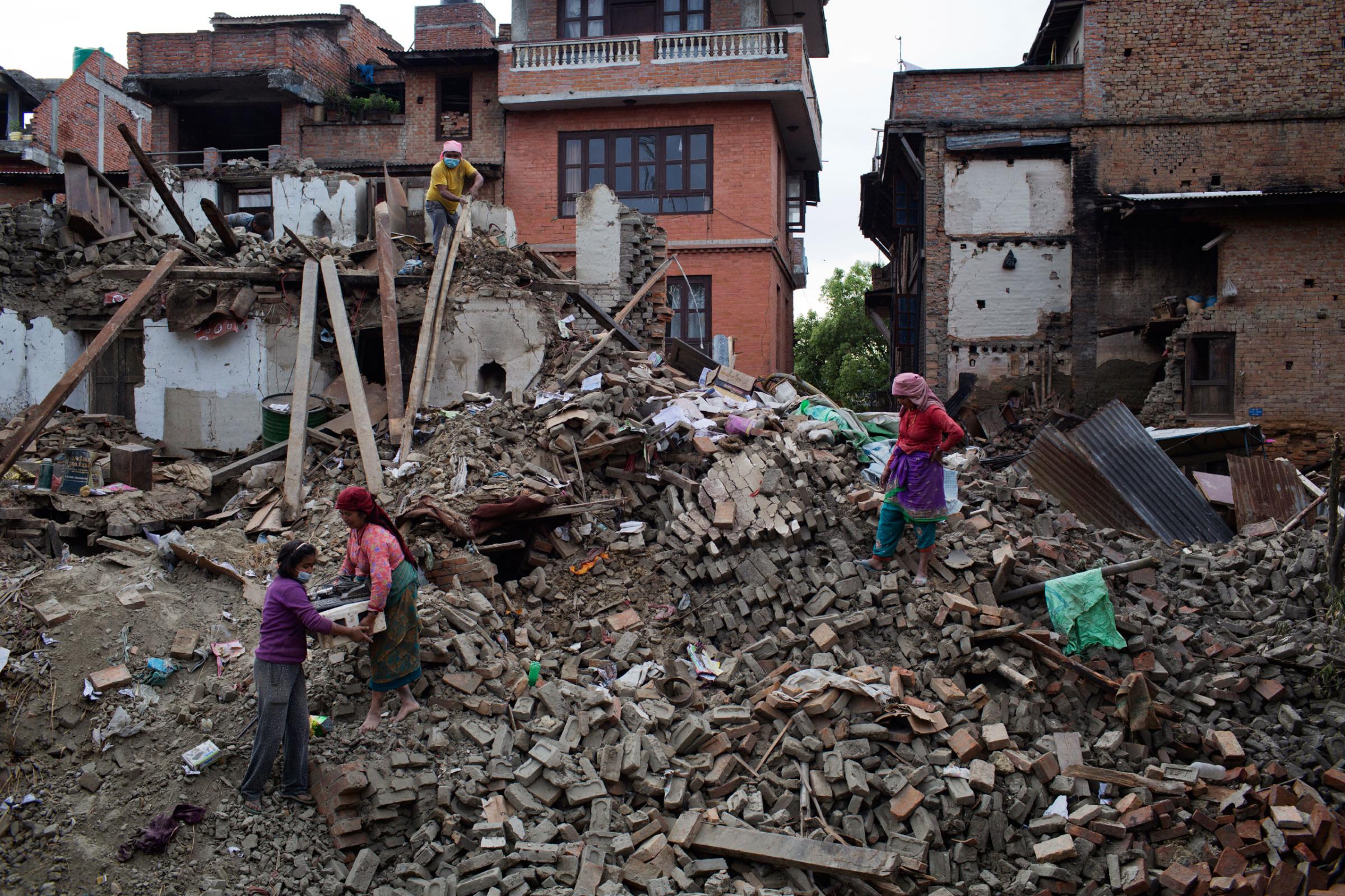

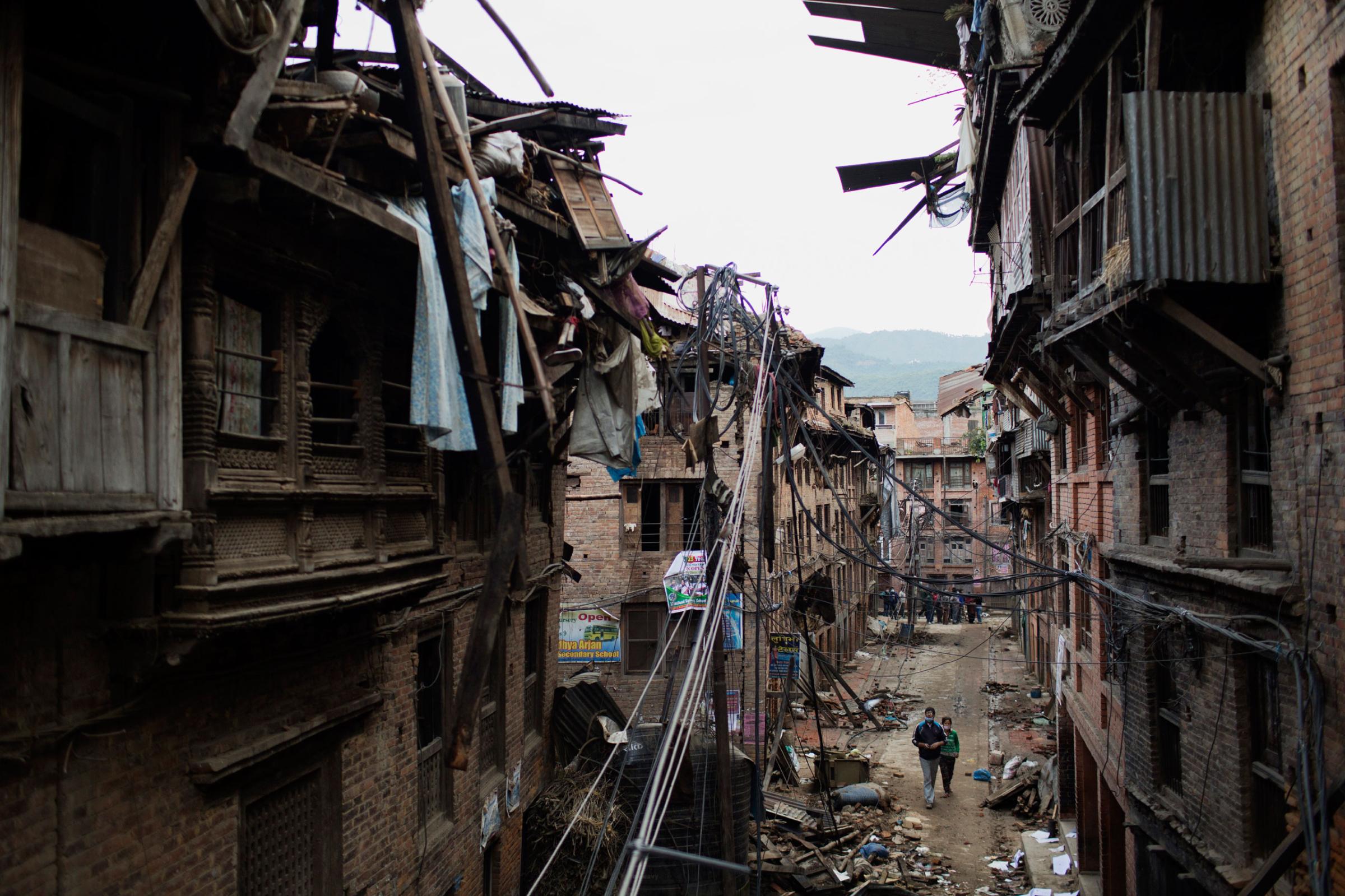
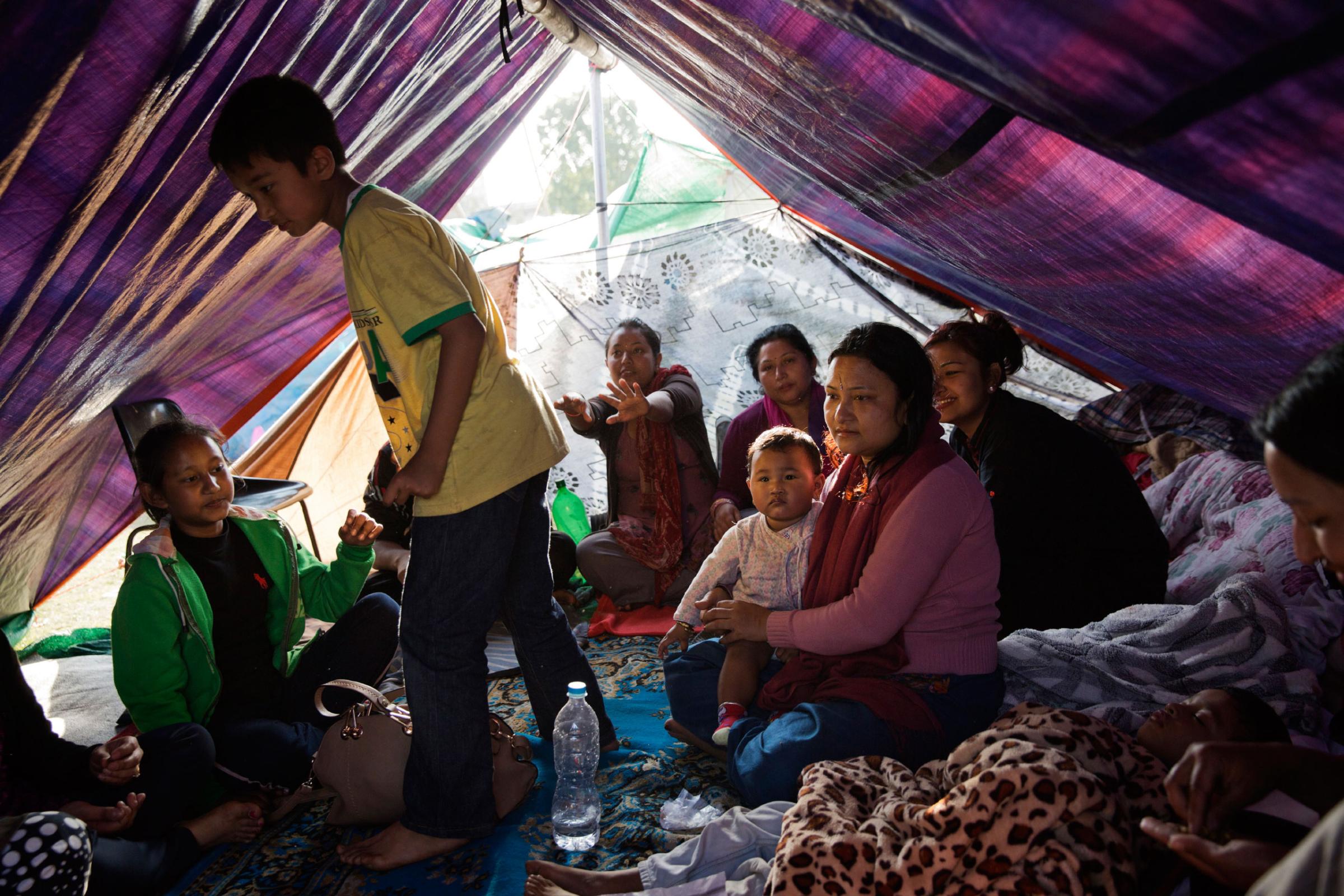
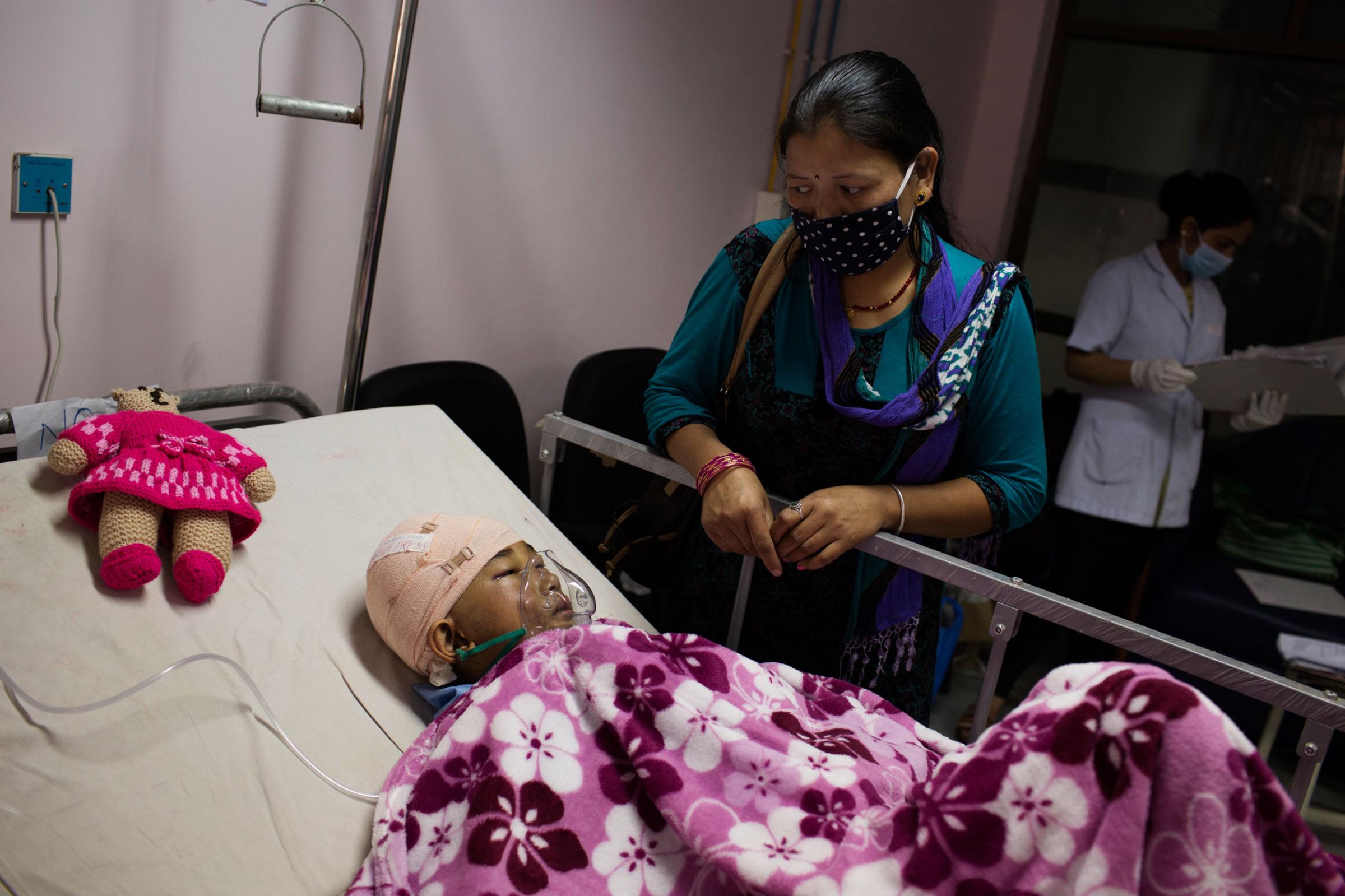


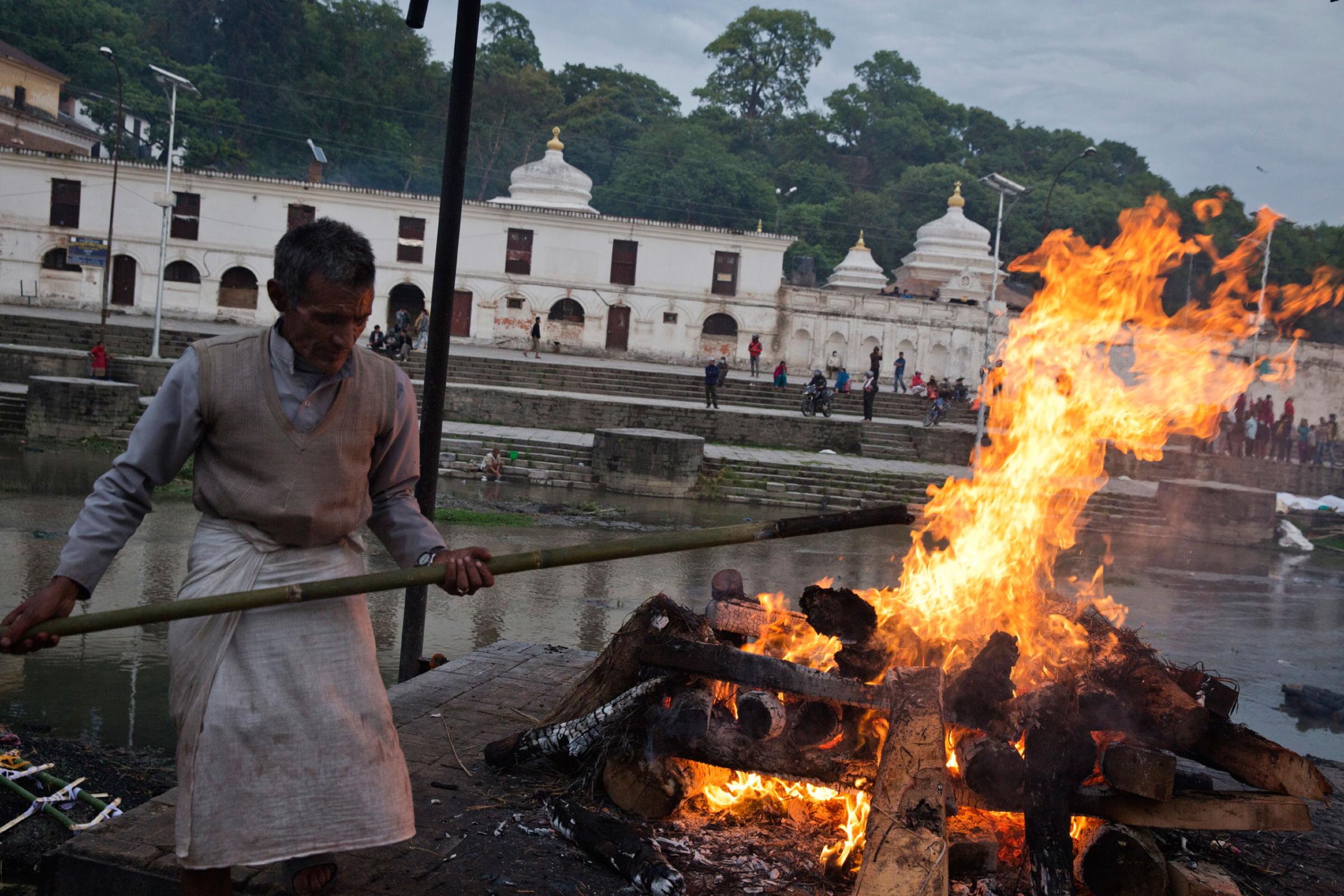
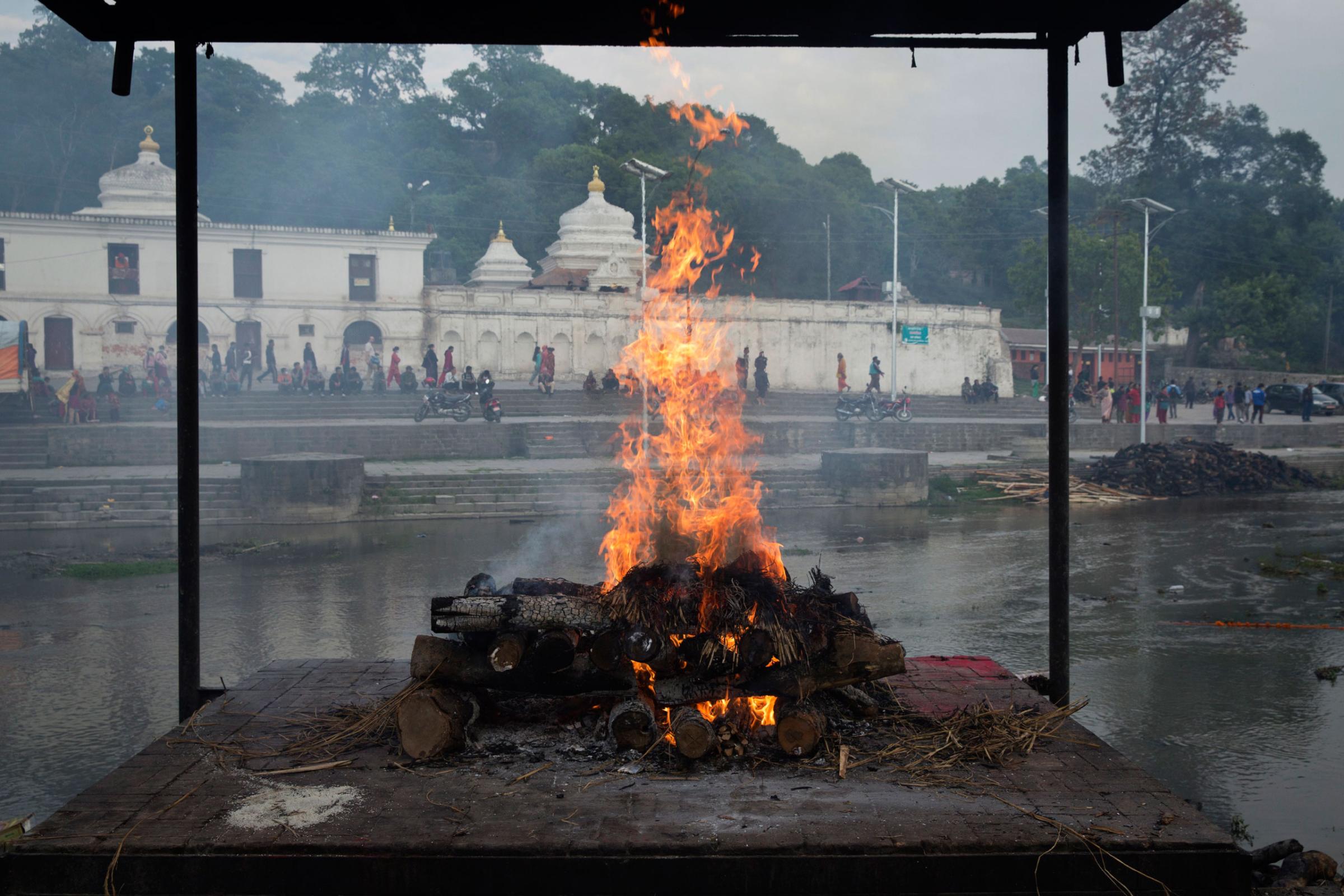
Down on the shoal, young men like Kattel and Tamang are joined by 13 volunteers from the Khawalung Monastery. The monastery’s students, like Tashi,19, have supplied all volunteers with latex gloves as protection while moving the bodies. The students, dressed in sleeveless red robes and bright yellow vests, have matching yellow baseball caps.
“I am pretty scared of the dead bodies,” says Tashi, his arms, legs and face still wet after washing up after the day. They had disposed of 20 bodies in just over 30 minutes, but through the hottest time of the day. Asked why he had decided to volunteer, particularly given his apprehension, he said he was eager to find some way he could help.
Officials expect the death toll to climb to 6,000 as rescue and relief teams move through the countryside. According to an official in the forensic unit at Tribhuvan University Teaching Hospital contacted Friday evening, there are 33 unclaimed bodies in the morgue, 26 have yet to be identified, and the hospital is adding an average of 10 bodies to the morgue each day.
More Must-Reads From TIME
- The 100 Most Influential People of 2024
- Coco Gauff Is Playing for Herself Now
- Scenes From Pro-Palestinian Encampments Across U.S. Universities
- 6 Compliments That Land Every Time
- If You're Dating Right Now , You're Brave: Column
- The AI That Could Heal a Divided Internet
- Fallout Is a Brilliant Model for the Future of Video Game Adaptations
- Want Weekly Recs on What to Watch, Read, and More? Sign Up for Worth Your Time
Contact us at letters@time.com